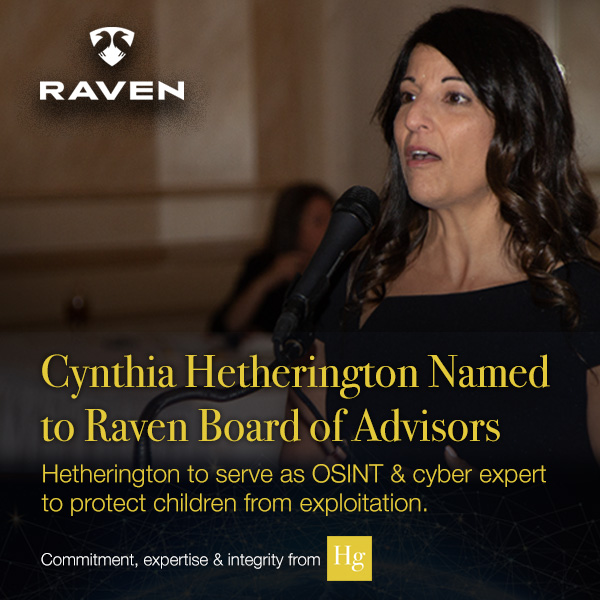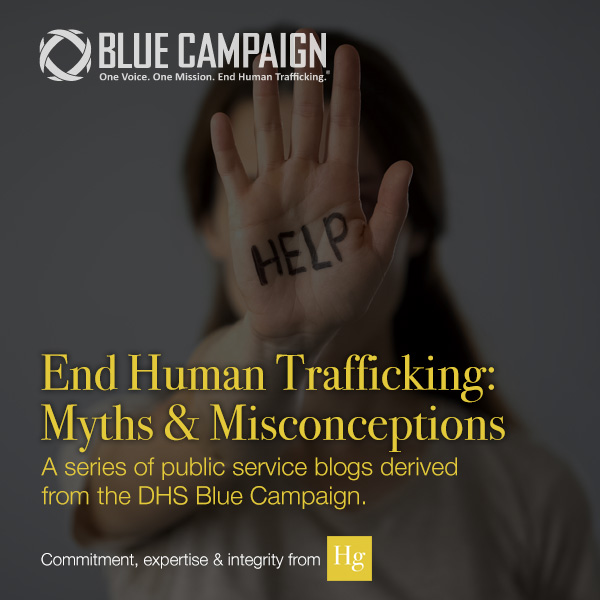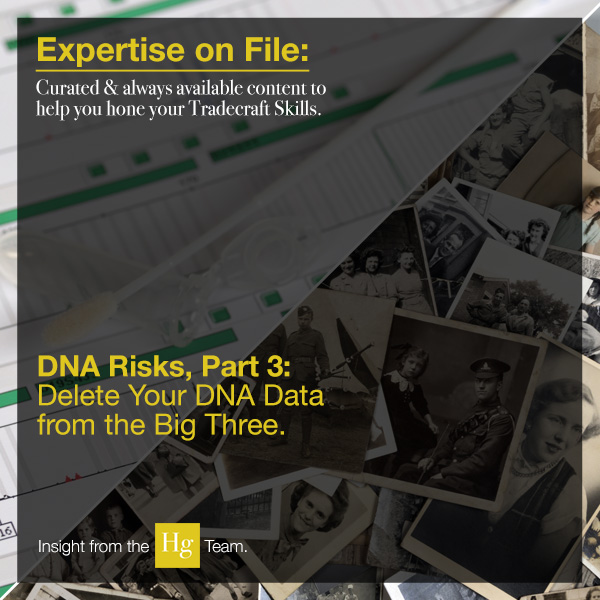Cynthia Hetherington, founder and President of Hetherington Group (Hg), serves on the Raven Board of Advisors as a subject matter expert in open source (OSINT) and cyber investigations. In her commitment to Raven’s mission to transform the United States’ response to child exploitation, Hg is issuing a series of public service blogs derived from the Department of Homeland Security’s Blue Campaign.
The Blue Campaign is a national public awareness campaign designed to educate the public, law enforcement, and other industry partners to recognize the indicators of human trafficking, and how to appropriately respond to possible cases.
Forced Labor Data, DHS
Forced labor occurs when individuals are compelled against their will to provide work or service through the use of force, fraud, or coercion. This crime happens both in the United States and overseas. The International Labour Organization (ILO) estimated that 24.9 million people around the globe were in forced labor as of 2016. Victims are rarely able to seek help for various reasons. For instance, they may be hindered by language barriers, or they may physically be unable to leave the premises to seek help if their movements are restricted and monitored by their employer.
What Does it Look Like?
Forced labor indicators often intersect and overlap, feeding into each other. Some signs may be more subtle than others. For instance, the individual could fall into debt during the recruitment process, compounded by an employer who takes unexpected deductions from their pay. The worker then cannot repay their debt as quickly as they had anticipated, falling further into debt bondage as a result of both deception and withholding of wages. Does an individual appear to be monitored when talking to or interacting with others? Are they living in dangerous, overcrowded, or inhumane lodging provided by an employer? Are they isolated, physically or culturally? A “yes” to any of these questions could indicate a potential forced labor situation.
Indicators of forced labor may take place at any point during the recruitment and employment process. Forced labor could begin during the worker’s recruitment process to force the acceptance of the job, to deceive the worker into an exploitative job, or to create a situation of debt bondage by charging recruitment fees that are virtually impossible for the workers to repay. Once the person is working, an employer may also force, defraud, or coerce the victim to perform work not agreed to at the time of recruitment. A worker may agree to do a job, find the conditions are not what were expected and agreed upon, but be prevented from leaving the job by their employer.
A list of indicators used to identify whether forced labor is occurring can be found on the ILO’s website.
The following dramatized scenarios depict indicators of labor trafficking—a crime committed when a trafficker uses force, fraud, or coercion to compel another person to work for little or no wages. Human trafficking victims are often invisible because we do not recognize indicators of human trafficking. Identifying signs of human trafficking and reporting a tip may save a life. (DHS Video by Blue Campaign/Released)
See. Call. Save.
Do not at any time attempt to confront a suspected trafficker directly or alert a victim to your suspicions. Your safety as well as the victim’s safety is paramount. Instead, please contact local law enforcement directly or call the tip lines indicated on this page:
- Call 1-866-DHS-2-ICE (1-866-347-2423) to report suspicious criminal activity to the U.S. Immigration and Customs Enforcement (ICE) Homeland Security Investigations (HSI) Tip Line 24 hours a day, 7 days a week, every day of the year. Highly trained specialists take reports from both the public and law enforcement agencies on more than 400 laws enforced by ICE HSI, including those related to human trafficking. The Tip Line is accessible outside the United States by calling 802-872-6199.
- To get help from the National Human Trafficking Hotline (NHTH), call 1-888-373-7888 or text HELP or INFO to BeFree (233733). The NHTH can help connect victims with service providers in the area and provides training, technical assistance, and other resources. The NHTH is a national, toll-free hotline available to answer calls from anywhere in the country, 24 hours a day, 7 days a week, every day of the year. The NHTH is not a law enforcement or immigration authority and is operated by a nongovernmental organization funded by the Federal government.
By identifying victims and reporting tips, you are doing your part to help law enforcement rescue victims, and you might save a life. Law enforcement can connect victims to services such as medical and mental health care, shelter, job training, and legal assistance that restore their freedom and dignity. The presence or absence of any of the indicators is not necessarily proof of human trafficking. It is up to law enforcement to investigate suspected cases of human trafficking.
This information is provided by the U.S. Department of Homeland Security. To view other human trafficking scenarios, visit: https://www.dhs.gov/medialibrary/collections/23517




